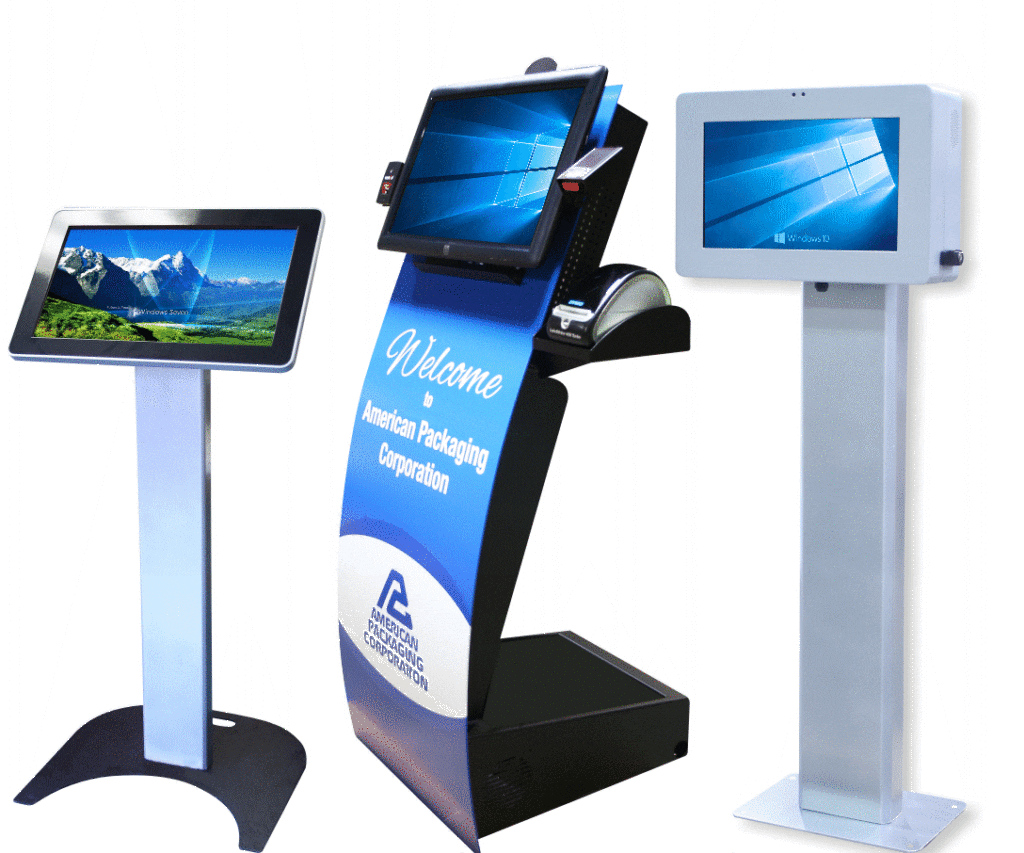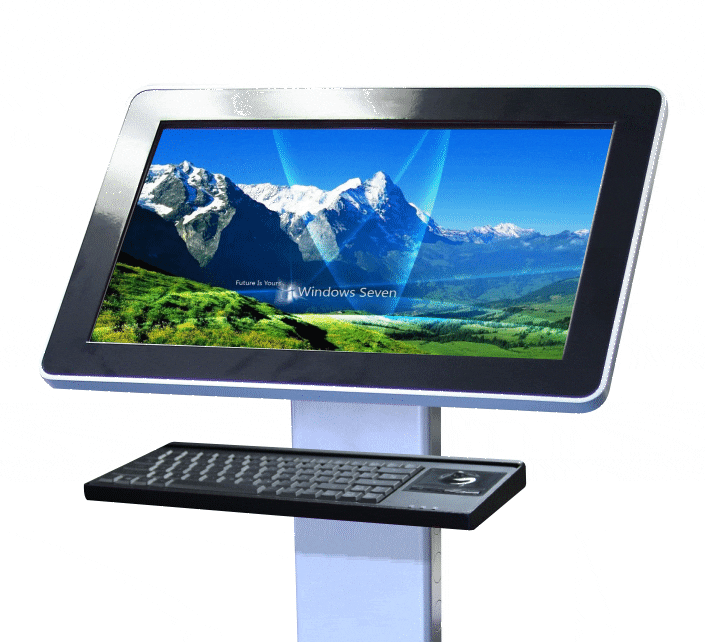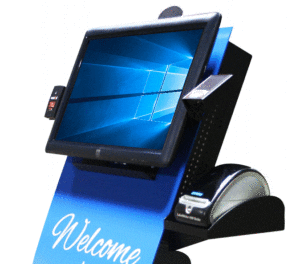What Is the Price Range for Interactive Kiosks in 2025?
Buyer’s Guide to Costs and Configurations

In 2025, interactive kiosks are priced between $1,200 and $10,500. The cost depends on factors like display size, user interface, and features such as ticketing, POS systems, or retail marketing tools. Other factors affecting the price include internet connectivity, digital photo usage, trade show requirements, and human resources integration.
Creating a buyer’s guide for interactive kiosks involves looking at several aspects, including the types of kiosks available, their prices, and the features each type provides. Here’s a detailed guide to help you understand the options:
1. Types of Interactive Kiosks
a. Information Kiosks
- Description: Used to provide information in malls, tourist areas, and public spaces.
- Features: Touchscreens, multimedia content, internet access.
- Typical Locations: Shopping centres, museums, transportation hubs.
b. Self-Service Kiosks
- Description: Allow users to complete ticketing, check-in, or ordering food.
- Features: Payment processing, printers, scanners.
- Typical Locations: Airports, fast-food restaurants, and cinemas.
c. Wayfinding Kiosks
- Description: Assist users in navigating large buildings or areas.
- Features: Interactive maps, search functions, multilingual support.
- Typical Locations: Hospitals, universities, large corporate campuses.
d. Digital Signage Kiosks
- Description: Show advertisements, announcements, or public information.
- Features: High-resolution screens, often with touch capabilities.
- Typical Locations: Retail stores, public squares, event venues.
e. Retail Kiosks
- Description: Focus on retail activities like ordering products or paying bills.
- Features: Barcode scanners, card readers, receipt printers.
- Typical Locations: Shopping malls, convenience stores, utility service centers.
2. Cost Factors
a. Hardware
- Range: $1,000 to $10,000+
- Factors: Screen size, build quality, specialized components like printers or scanners.
b. Software
- Range: $500 to $5,000 (one-time or annual fees)
- Factors: Level of customization, software complexity, ongoing support or updates.
c. Maintenance
- Range: Varies widely
- Factors: Warranty, how often maintenance is needed, on-site or remote support.
d. Connectivity
- Range: Monthly fees
- Factors: Type of internet connection, data usage plans.
3. Considerations When Buying
a. Purpose and Location
- Choose the kiosk type that matches its intended use and location. Consider environmental factors like weather for outdoor kiosks.
b. User Interface and Accessibility
- Ensure the kiosk is easy to use and meets ADA standards for accessibility. Think about offering multiple languages for diverse users.
c. Security and Privacy
- Use secure payment processing for transactional kiosks. Implement data protection measures for user information.
d. Customization and Scalability
- Ensure the kiosk can be customized in software and hardware to meet specific needs. Ensure it can grow or upgrade with future technology.
e. Vendor Support and Warranty
- Check the vendor’s support services and warranty terms. Look for long-term reliability and a good reputation.
4. Additional Points to Consider
Investing in an interactive kiosk requires careful thought about its type, cost, and the specific needs it will meet. A smart investment must balance initial costs with long-term benefits and support. Always research vendors thoroughly and consider future scalability when selecting a kiosk solution.
COMPARE KIOSK QUOTESWhere to Buy Kiosks
When purchasing interactive kiosks, you have several options, from specialized manufacturers to online retailers. Here’s a guide on where to buy and what to consider:
1. Specialized Kiosk Manufacturers
- Description: Companies that specialize in making interactive kiosks.
- Advantages: Customization options, expert advice, dedicated support.
- Considerations: We may need a larger budget and longer wait times for custom orders.
- Examples: Kiosk Information Systems, Olea Kiosks, ZIVELO.
2. Commercial Technology Suppliers
- Description: Suppliers offer various commercial tech solutions, including kiosks.
- Advantages: Larger variety of products, potentially better prices.
- Considerations: We may have less focus on kiosks specifically.
- Examples: CDW, Insight, B&H Photo Video.
3. Online Marketplaces
- Description: Platforms like Amazon, Alibaba, or eBay.
- Advantages: Convenience, variety, possible lower prices.
- Considerations: Varying quality, limited customization, less customer support.
- Tips: Look for sellers with high ratings and good reviews.
4. Direct Purchase from Software Providers
- Description: Some kiosk software companies also sell hardware.
- Advantages: Integrated software and hardware solutions.
- Considerations: Limited to what works best with their software.
5. Local Electronics Stores
- Description: Some local shops may offer basic kiosk models or can order them.
- Advantages: Can see the product in person, local support.
- Considerations: Limited selection, possibly higher prices.
6. Trade Shows and Expos
- Description: Industry events where manufacturers display their latest products.
- Advantages: See a wide range of products and innovations network with suppliers.
- Considerations: Held at specific times and places, may require travel.
Key Considerations When Buying
- Research: Read reviews case studies and ask for references.
- Budget: Include total ownership costs, such as maintenance and software.
- Customization: Ensure the kiosk can be tailored to your needs.
- Warranty and Support: Check warranty terms and ongoing support options.
- Software Compatibility: Make sure the hardware works with your chosen software.
Final Tips
- Request Demos: If possible, get a demo unit or visit a showroom.
- Compare Quotes: Get quotes from multiple suppliers to compare prices and features.
- Check Lead Times: For custom orders, verify the expected delivery time.
- Plan for Future Needs: Think about scalability and future upgrades.
By exploring these options and considering your specific needs and budget, you can find the right source for your interactive kiosks. Remember, the cheapest option might not be the best in the long run, especially for technology-driven products like interactive kiosks.
COMPARE KIOSK QUOTESINDOOR/OUTDOOR KIOSKS
The biggest factor affecting kiosk cost is whether it’s for indoor or outdoor use. Outdoor kiosks are generally more expensive than indoor ones because they need additional features to handle various temperatures and weather conditions.
Outdoor kiosks require water-sealed, powder-coated enclosures, internal heating and cooling systems, wide-temperature RAM and solid-state drives, high-brightness LCDs with cooling technology for sunlight exposure, and other outdoor-specific modifications.
- Indoor 21.5” Base Price: $1,110 to $2,020, depending on CPU, RAM, and video card setup (no stand or peripherals).
- Outdoor 21.5” Base Price: $2,803 to $3,702, depending on CPU, RAM, and video card setup (no stand or peripherals).
MOUNTING
Another key decision is mounting the kiosk to a wall, on a stand, or on a countertop/desktop. Wall mounting is cheaper and works well if you have a suitable wall space, while stands are more flexible but cost more and need floor space.
There are different types of kiosk stands. Lower-cost options are smaller and usually don’t securely hold peripherals, while higher-end stands have internal locking compartments for peripherals and accessories. The choice of stand can also affect custom decals or branding you might want on the kiosk.
COMPARE KIOSK QUOTESPC
The cost can range from a basic J1900 CPU with 4GB RAM and onboard video to an i7 CPU with 32GB RAM and a 4GB video card.
The PC in the kiosk functions like any desktop PC. Configuration options include CPU, RAM, graphics, connectivity, and an operating system tailored to the kiosk’s software application.
Also, consider if the kiosk needs internet access and how it will connect via WiFi, wired LAN, or 3G/4G cellular. These choices impact the price.
TOUCHSCREEN
Costs can vary from having no touch or keyboard (display only) to including both touchscreen and keyboard.
Decide whether to use a touchscreen, keyboard, or both based on the application software and the amount of data users need to enter. Touchscreens work best on larger screens with clear touch options and minimal keyboard input. If some keyboard input is needed, a virtual keyboard can be used.
If users need to input a lot of data, a keyboard with a pointing device like a trackball might be mounted on the front of the kiosk.
 Kiosk Peripherals
Kiosk Peripherals
Peripherals can range from none to many, including kiosk printers, credit card readers, barcode scanners, keyboards, RFID readers, and cameras.
The choice of peripherals depends on the application. For example, a payment kiosk might need a credit card reader, bill acceptor, or chip reader, while an information kiosk typically has no peripheral needs.
How Much Do These Kiosks Cost?
Now let’s discuss the costs. How much does a touchscreen kiosk cost? The answer varies.
Here are some baseline prices to expect when shopping for your kiosk:
- Base Indoor Kiosk: $1,126
- Bill Validator: $770
- Card Reader: $71
- Kiosk Software: $40
- Enclosure: $990
- Keyboard: $184
- Upgraded CPU: $188
- Internal Thermal Kiosk Printer: $790
- 15-inch LCD Touchscreen: $420
- 17-inch LCD Touchscreen: $459
Additional costs to get your touchscreen kiosk up and running include:
- Initial Project Management: $320
- Installation: $1,050
- 36 Months of Software Support: $3,609
- 36 Months of Management Software: $1,850
This brings the total to over $11,600 per kiosk. Some of these costs, like ongoing software support and management software, are recurring and must be paid every three years.
What Are the Benefits and Uses of Touchscreen Kiosks?
Touchscreen interactive kiosks, also known as self-service kiosks, provide 24/7 access to goods and services anywhere for the convenience of users and customers. Kiosks enhance the reach and capabilities of businesses. Here are some examples of indoor and outdoor kiosk applications:
Information Kiosks and Internet Access Kiosks
Information and internet access kiosks cover a wide range of uses. These kiosks let users browse and interact with website information in a controlled manner, allowing access to selected pages using “browser lock-down” software available from several providers.
Common information kiosk applications include:
- Wayfinding Kiosk: Provides maps and directories for parks, events, buildings, cemeteries, etc. These kiosks usually don’t need additional peripherals.
- Product Lookup Kiosk and Price Check Kiosks: Offers online access to product details and pricing. These may include a barcode scanner for easier searches.
- Trade Show Kiosk: Ideal for trade shows, these kiosks can display extensive product information, marketing materials, photos, and videos. They can also capture visitor information for follow-up using barcode scanners or magnetic card readers. Typically, these kiosks include a barcode scanner and/or magnetic card reader for lead generation.
- Museum Kiosk: Museums benefit from interactive kiosks by enhancing exhibits with large screens that display detailed information to visitors. These kiosks can show high-resolution photos and HD videos and are usually larger, around 32” and up, for greater impact.
TASK SPECIFIC and SELF-SERVE KIOSKS
Touch kiosks can handle various tasks for users, including event registration, self-check-in, accepting payments and donations, point of care, access control, and more.
Common task-specific and self-serve kiosk applications include:
 Check-in Kiosks
Check-in Kiosks
Used for hotel check-ins, flight check-ins, community event check-ins, healthcare check-ins, and child check-ins. These kiosks often have peripherals like label printers, barcode scanners, and card readers for verification and validation, but they can also be simple touchscreens without additional peripherals.
Visitor Kiosks
Used for hotel check-ins, flight check-ins, community event check-ins, healthcare check-ins, and child check-ins. These kiosks often have peripherals like label printers, barcode scanners, and card readers for verification and validation, but they can also be simple touchscreens without additional peripherals.
Access Control Kiosks
Used to verify a user’s identity and grant access to buildings, rooms, or secure areas. Gate control kiosks, which are outdoor, manage gate access and may include peripherals like biometric scanners (fingerprint or palm), barcode and magnetic card readers, and cameras.
Payment Kiosks
Accepting payments is a common self-service used by kiosks. If a website can handle payments, a kiosk can too. A credit card reader is typically used, but bill acceptors and more advanced peripherals like check readers and bill recyclers can also be included in high-end models. Payment kiosks with these peripherals need specific software developed for their use.
 Donation Kiosk
Donation Kiosk
Another type of payment kiosk, donation kiosks, are usually simpler and may only use a card reader to accept donations.
Point of Care Kiosks
Used in hospitals, assisted living facilities, and retirement homes, point of care kiosks (POC) are typically mounted on walls in hallways to document patient Activities of Daily Living (ADLs) and necessary care for Medicare billing and to maintain accreditation and ratings.
COMPARE KIOSK QUOTES










